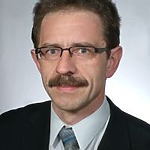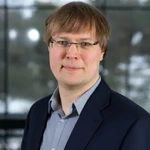The Institute of Biomedical Engineering invites you to an international symposium focused on the latest ideas in biomedical engineering and their practical applications.
📣 We welcome curious, active, and inquisitive students and colleagues to join engaging discussions, share insights, and broaden their perspectives in an inspiring academic setting!
Date: May 7, 2025 (Wednesday), 9:00 AM
Venue: M-Lab, Room 205 (Studentų St. 63a, Kaunas)
Program:
9:00 – 9:45 – Prof. dr. hab. Piotr Augustyniak (AGH University of Krakow) lecture “Touchless Heart Rate Monitoring from a Drone using Videoplethysmography”
9:45 – 10:00 – Discussions
10:00-10:45 – Dr. Kristjan Pilt (Tal Tech) lecture “Biomedical Engineering at Taltech for Better Human Health and Well-being”
10:45-11:00 – Discussions
11:00-11:15 – Coffe and chat break
11:15-12:00 – Prof. dr. Prof. dr. Julius Griškevičius (Vilnius Tech) lecture “Transforming Biomechanical Research into Everyday Solutions: Highlights from Vilnius Tech”
12:00-12:15 – Discussions
The language of the symposium is English.
Lectors:

Prof. dr. hab. Piotr Augustyniak (Department of Biocybernetics and Biomedical Engineering, AGH University of Krakow, Poland)
TITLE: Touchless Heart Rate Monitoring from a Drone using Videoplethysmography
ABSTRACT: The advancement of preventive medicine and, subsequently, telemedicine drives the need for noninvasive and remote measurements in patients’ natural environments. Heart rate (HR) measurements are particularly promising and extensively researched due to their quick assessment and comprehensive representation of patients’ conditions. However, in scenarios such as endurance training or emergencies, where HR measurement was not anticipated and direct access to victims is limited, no method enables obtaining HR results that are suitable even for triage.
The lecture presents and discusses the possibility of remotely measuring of human HR from a series of in-flight videos using videoplethysmography (VPG) along with skin detection, human pose estimation and image stabilization methods. An unmanned aerial vehicle (UAV) equipped with a camera captured ten segments of video footage featuring volunteers engaged in free walking and running activities in natural sunlight. Various methods were used to detect, track and stabilize the humen image in motion. Additionally, HR was estimated using several VPG methods: the green channel (G), green-red difference (GR), excess green (ExG), independent component analysis (ICA), and a plane orthogonal to the skin (POS). When compared to simultaneous readings from a reference ECG-based wearable recorder, the root-mean-squared error ranged from 17.7 (G) to 27.7 (POS), with errors of less than 3.5 bpm achieved for the G and GR methods. Consequently the results were found acceptable for touchless human pulse measurement with the accompanying UAV-mounted camera. The method bridges the gap between HR-transmitting wearables and emergency HR recorders, and it has the potential to be advantageous in training or rescue scenarios in mountain, water, disaster, or battlefield settings.
BIO: Piotr Augustyniak (IEEE Senior Member), DSc graduated in 1989 from the Electrical Engineering Department AGH-University of Krakow, and received the PhD degree (with honours) and DSc (habilitation) in 1995 and 2004 respectively. Since 1989 he works at the Institute of Automatics as a research engineer, since 1995 as an assistant-professor, since 2007 as an associate professor and since 2016 as a full professor. He also worked at Aspel company a leading manufacturer of ECG interpretive recorders in years 1998-2008. Since 2018 he is the head of Department of Biocybernetics and Biomedical Engineering. In years 2018-2024 he was Chair of Biomedical Engineering Discipline Board at AGH UoK and Since 2020 he is member of the Polish Council for Scientific Excellence, currently Chair of the working group in field of Technical and Engineering Sciences.
His scientific interests include hardware and software problems of biosignal processing, currently he is working on perceptual model of electrocardiogram and data-dependent signal representation. He prototyped four acquisition and analysis systems for electrocardiography, electrooculography and electroencephalography.

Dr. Kristjan Pilt (Department of Health Technologies at Tallinn University of Technology, Tallin, Estonia )
TITLE: Biomedical Engineering at Taltech for Better Human Health and Well-being
ABSTRACT: The lecture will briefly present the research topics at the TalTech Department of Health Technology, focusing on mental stress levels and arterial stiffness. In recent years, we have been involved in exciting projects ranging from physical activity detection and energy expenditure estimation using accelerometers to mental stress estimation in urban environments.
Alongside these topics, we are also working on arterial stiffness estimation methodologies using photoplethysmography and waveform analysis, and applying them in various areas. All of this is based on physiological measurements, often relying on bio-optical methods that have been utilized to support better human health and well-being.
BIO: Kristjan Pilt is a senior researcher in the Department of Health Technologies at Tallinn University of Technology. He received the B.S, M.Sc, and Ph.D. degrees in electronics and biomedical engineering from the Tallinn University of Technology, Tallinn, Estonia, in 2005, 2008, and 2014, respectively. Recently, he has finished post doctoral project in City, University of London related to the photoplethysmography. His research focuses on developing methods to assess arterial stiffness and monitor blood pressure for the early diagnosis of cardiovascular diseases. Lately, he has also worked on creating methodologies for evaluating physiological well-being using multiparametric physiological measurements in urban environments.

Prof. dr. Julius Griškevičius (Dept. of Biomechanics, Vilnius Gediminas Technical University (VILNIUS TECH), Vilnius, Lithuania)
TITLE: Transforming Biomechanical Research into Everyday Solutions: Highlights from VILNIUS TECH
ABSTRACT: Biomechanical engineering is integral to improving human life quality by translating advanced research into practical applications. At VILNIUS TECH, the Department of Biomechanical Engineering leads in developing innovative solutions for real-world challenges in healthcare, rehabilitation, and assistive technologies. This presentation will highlight the department’s key research activities, such as IMU classification for movement analysis and the Virtual Reality-Action Observation Therapy (VRAOT) study. Through IMU classification, we are enhancing the understanding of human motion, facilitating the development of improved diagnostic tools and personalized rehabilitation methods. The VRAOT study, which combines virtual reality with rehabilitation therapies, shows promising potential for promoting active aging.
BIO: Julius Griškevičius earned his PhD in Mechanical Engineering from Vilnius Gediminas Technical University (Vilnius Tech) in 2005. Since then, he has been a faculty member at the same university, where he now serves as a professor in the Department of Biomechanical Engineering at the Faculty of Mechanics. His academic journey included a three-month internship at ETH Zurich, contributing to his thesis on the safe transportation of disabled individuals using public transport. As the head of the Department of Biomechanical Engineering, Julius oversees the delivery of two study programs: BSc in Medical Engineering and MSc in Biomedical Engineering. He is also the head of the Medical Engineering study committee, teaches courses such as Automatic Control, Dynamics of Biomechanical Systems, and Information Systems in Medicine, and supervises both BSc and MSc theses. Julius is a member of the mechanical engineering doctorate committee, supervises PhD students, and has had two students successfully defend their PhDs under his guidance. His research focuses on the development of clinical decision support systems based on biomechanical models of the human musculoskeletal system, biofeedback, biomedical data, and the application of IT in medicine. He is the president of the Lithuanian Society of Biomechanics (LSB) and chairs both the organizing and scientific committees of the International Conference BIOMDLORE.
The symposium will bring together biomedical engineering experts and researchers from Lithuania and neighboring countries (Estonia and Poland) to share innovations in advanced biomedical engineering solutions intended for everyday application, engage in discussions, and exchange ideas and practical experiences in the field.
Let’s explore together what today’s biomedical engineering is all about!
Contacts:
Asta Dapkevičienė: asta.dapkeviciene@ktu.lt
Vaidotas Marozas: vaidotas.marozas@ktu.lt